Desert DefinitionDeserts are the most loved place by all adventurers. Deserts are such areas that receive very little or no rainfall. Generally, there are adjectives used by people to define deserts- hot, dry, and empty are the top adjectives used to define the environment of the desert. However, according to the study, the temperature of the desert varies according to the nearby region. Some deserts are very hot in the daytime; they almost have a temperature of 54 degrees Celsius, which is almost 130 degrees Fahrenheit. On the other hand, some deserts have cold winters or are cold for the whole year, like Ladakh, Gobi Desert, and many more. 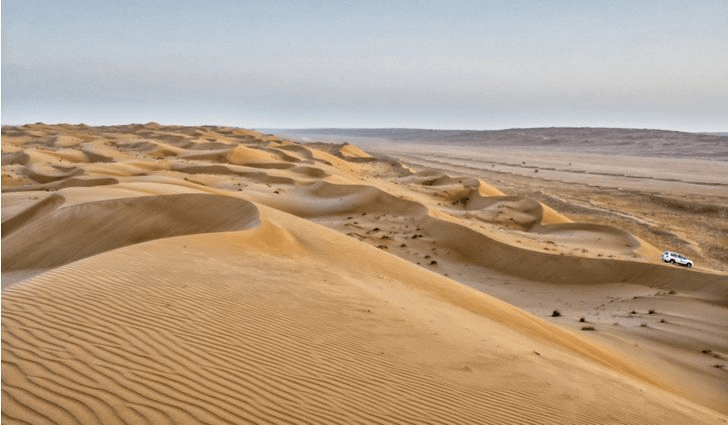
It is a myth that deserts are lifeless and empty, many deserts are home to many people; they are their life savings and are their daily pieces of bread as well. Many deserts have plants, animals, and other organisms staying in the core of the desert. People who stay near the deserts have superb skills to survive in this tough environment, and all the tactics they follow for their survival have been going on for centuries. Where are Deserts Found?Deserts cover nearly one-fifth of the Earth's land area and are found on every continent present on the planet Earth. According to the research, it is said that deserts are home to 1 billion people, which is one-sixth part of Earth's Population. Environment in DesertsCertain similarities are found in all the deserts; that is, all the deserts are arid or dry. According to experts, a desert is such an area of land that receives at most 25 centimeters of rainfall that too in a year. The amount of evaporation that takes place in deserted areas often leads to exceeding the annual rainfall. In all the deserts, only some amount of water is available for plants and other living organisms. 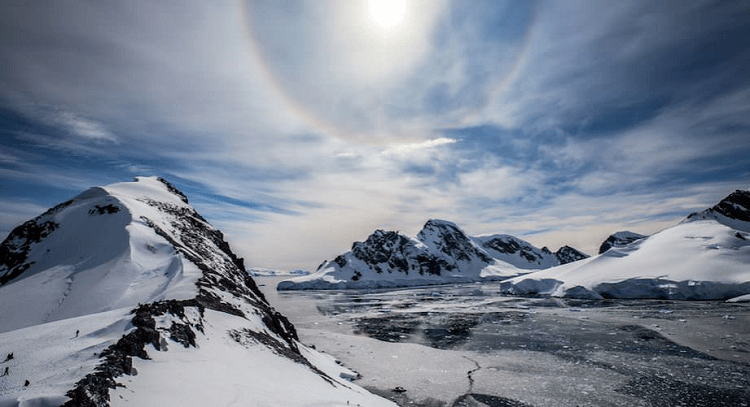
Often in the movies, it is shown that deserts come with a sea of shifting sand, but let us tell you that dunes cover only 10 percent of the world's deserts; others have mountains and dry expanses of rock, sand, or salt flats as well. In this article, we will be discussing in detail the different types of desserts that are found across the globe. Common Characteristics Found in DesertsThe desert is a unique ecosystem that is characterized by its extreme aridity and lack of vegetation found in the common deserts. Despite all the harsh weather conditions, deserts are home to a diverse range of animals, plants, and human beings who can adapt to the harsh and violent. Now let us explore the different characteristics that are found in all the deserts. Climate And WeatherAs stated earlier, deserts are characterized by hot and dry weather with temperatures that can rise to extreme levels during the daytime and fall slightly or even at an extreme level in the nighttime. According to the research, the average annual rainfall in the desert is less than 10 inches, and some deserts can go ears without any rainfall. Due to the lack of rainfall in the deserts, it eventually leads to low human levels comma which further identifies the heat during the day and contributes to the rapid temperature drops that can be experienced only at night. SoilUsually, the soil that is found in the desert is sandy, summer rocky, or gravely with a low amount of organic matter present. The soil found in the desert is usually shallow, and the wind can easily erode the topsoil. In some deserts, salt pans occur when the water evaporates from the soil and leaves behind a salt crust. VegetationThe desert's vegetation is sparse and consists of plants that have adapted themselves to harsh weather conditions. Here is a list of some common desert plants, they are cacti, scullents, and shrubs. These plants can survive in the desert as they have evolved to store water in their tissues, allowing them to survive long periods without having any single drop of water. The roots of all these plants are generally shallow, which allows them to absorb any available water quickly. AnimalsIt is a myth that people state no one can live in deserts, but we can find that deserts are home to a diverse range of animals, including reptiles, birds, insects, and mammals. These animals have the ability to survive, and such harsh conditions as they have developed themselves in a certain way which allows them to conserve water and tolerate extreme temperatures. Some common desert animals are snakes, lizards, scorpions, and camels. LandformsWater is a scarce resource in the desert, and most of the present deserts have limited or no permanent water resources. However, some deserts have underground aquifers that can be accessed through wells. Some desert plants and animals have adapted themselves to collect and store water, and they have the technique to obtain water from the environment. Human impactIt has been seen that human activities like urbanization, mining, and agriculture have a significant impact on the ecosystem followed in the desert. If there is seen any extraction of resources from the desert, it can lead to soil erosion, loss of wildlife habitat, and destruction of vegetation. First, additionally, even the construction of roads and buildings can disturb the natural movement of animals, eventually leading to alteration in the natural landscape. Overall, the desert is a unique ecosystem that is characterized, or we can say is known for its extreme aridity, sparse vegetation, and a diverse range of animals despite all the harsh weather conditions, whether it be too sunny desert or a freezing one the desert is home to many species that have adapted themselves in such harsh conditions. A desert is a fragile ecosystem that is threatened by human activities, and it is important to protect it for future generations. Deserts are also important cultural and historical sites, and due to this factor, we need to protect the deserts for our future generations as well so that they can get to know about our own culture and history. Many desert regions that are present in the world have been in habituated by the human civilization for over 1000 of years, and they contain important archaeological sites and cultural artifacts. Not only this, but some desert regions also have significant religious and spiritual significance and are considered sacred by indigenous people and other groups living in that particular desert. Fun Facts About DesertsDeserts are one of the most fascinating and exciting places on earth. They are often harsh and inhospitable, but they are full of surprises and interesting facts. In this area of the article, we will explore some amazing facts about deserts, from the largest to the smallest, and everything that lies between Fact Number 1This Sahara desert is the largest hot desert present in the world. It spreads around 3.6 million square miles across northern Africa. Not only this, but it is also one of the hottest places on earth to come up with temperatures that can go up to 120 degrees Fahrenheit. Fact Number 2The Atacama desert present in Chile is the driest nonpolar desert in the world. It receives less than one inch of rain per year, that too in some areas only. Despite this, it is home to a wide variety of plants and animals, including a Flamingo that lives in the salt flats in the desert. Fact Number 3The Gobi desert that is present in China and Mongolia is one of the largest cold deserts in the world. It covers around 5,00,000 square miles. It has a diverse range of wildlife that includes- Bactrian camel, snow leopard, and Gobi bear. Fact Number 4The Namib desert in Namibia is one of the oldest deserts present in the world. It has some areas that estimate to be over 55,000,000 years old. This desert is also a home to some of the tallest sand dunes present around the world, and some of them reach a height of 1000 feet. Fact Number 5The Mojave Desert, located in the United States, is home to the Joshua tree, a unique plant species found only in the Mojave Desert. The tree was named after the biblical figure Joshua. The story behind this desert- Joshua reportedly lifted his arms towards the sky in the form of a prayer, and out of his arms, the tree branches resembled. Fact Number 6This Sonoran Desert, located in the southwest United States and another in West Mexico, is home to the Saguaro cactus, which can live up to 200 years and grow as tall as 50 feet. This cactus is also the largest cactus present in the united states. Fact Number 7The Thar desert that is present in India and Pakistan is the home to the great Indian desert scorpion, one of the largest scorpion species found in these deserts. This scorpion can grow up to 8 inches in length and is highly poisonous. Fact Number 8The Antarctica desert is the largest desert in the world. It covers over 5.5 million square miles. Despite the harsh conditions of the desert, it is home to two special animals, including Penguins, seals, and various species of grill and other small marine animals. Fact Number 9The Taklamakan desert in China is one of the world's largest shifting sand deserts. The meaning of Taklamakan stands for the "place of no return" in the Uyghur language, which reflects its reputation as a difficult place to navigate. Fact Number 10The Rub' al Khali, also known as the famous empty quarter, is the world's largest sand desert, covering almost 2,50,000 square miles across Saudi Arabia,Oman , Yemen and the United Arab Emirates. It is one of the most inhospitable places on earth, with a temperature that can rise up to 130 degrees Fahrenheit, and virtually no vegetation or water source can be found there. Fact Number 11The Dust e Ka Veer desert in Iran is one of the hottest deserts globally. It has a temperature that can go up to 150 degrees Fahrenheit, and despite this situation, it is home to a variety of plant and animal life that includes of Asiatic cheetah, which is one of the rarest big cats present around the globe. Fact Number 12The Simpson Desert in Australia is home to the world's largest parallel sand dunes, which cover almost 1000 miles. It is a home to a wide variety of wildlife that includes of red kangaroo, which is the largest Marsupial in the world. Advantages Of Visiting a DesertA desert is usually seen as a harsh and unforgiving place, but it is also one of the most fascinating places, showcasing different environments on the planet. From endless dunes of sand to rocky canyons, the desert offers a wide range of experiences, especially for adventure lovers. Although some may find it unappealing, there are numerous advantages of visiting a desert then make it an exciting place, and also gives you amazing memories to remember forever. A. First and foremost, a desert is a place of unparallel natural beauty. There you could experience the stark Baron, the landscape of the desert which is often punctuated but colorful wind flowers and catai, and you will also see clear skies that allow you to have amazing, stunning views of the stars in the dark night. Not only this but the beautiful sunrise and sunsets are a must-watch while you visit the desert with your loved ones. The sun rises, and the sunset in the desert is spectacular, with the sun casting long shadows across the sand and the sky a wash with shades of pink, orange, and red that will indeed give you a memory to remember forever. The silence of the desert is just mesmerizing. The desert's silence and stillness can also be very peaceful; this makes it an ideal place for meditation, reflection, or simply disconnecting from the stresses of life that we face in our daily routine. B. As we discussed above, the desert is not just about natural beauty, but it is also a home to rich cultural heritage. Many indigenous people have seen the desert as a home for 1000 years,they have been living there since their ancestor's age' and love, and enjoy the religious culture followed there. They love their traditions and way of life, that are still visible in their art, architecture, and cuisine of the region. All the adventure lovers love to explorer the desert and know about their cultures by visiting different museums, art galleries, and historical sites, or even participate in guided tours to gain more relevance. This amazing exposure regarding their culture broadens' one perspective and deepen their understanding of the world C. Another major reason that why you should visit the desert is the opportunity that you get for amazing adventure and exploration. There you will see vast expanses of sand and rock that provide ample space for hiking camping, and off-road north ventures, while the unique geological formation of the desert can be explored through the help of the guide. While we talk about off-road adventures, we often have a look at the Jeep rides that are present in the desert. Visitors can always participate in activities like hot air balloon rides, sandboarding, stargazing, and have an amazing, thrilling, and unforgettable experience. Note: it is important to know that the person should be prepared for the hard conditions that you might face in a desert, for this you need to be adaptable to the temperature which can be a valuable lesson for travelers seeking to challenge themselves in this amazing and magical environment.D. The desert is often associated with Wellness and healing. It is believed that the dry and warm temperature of the desert is said to have therapeutical properties that can improve respiratory health, reduce anxiety and stress, and improve a human's overall wellbeing. The desert is often known as the best place to practice yoga and meditation as it has powerful energy, and the stillness and silence add a star to the meditation. The environment present in the desert allows for a deeper connection to oneself and the natural world. The huge results that are present in the desert often offer programs for Wellness retreats and activities that help the person heal by providing unique and restaurant experiences and exercises. E. Visiting the desert can always have a positive impact on the environment. The desert ecosystem is fragile and vulnerable, and tourism can provide economic incentives for local communities to preserve and protect their environment and culture. Responsible tourism practices need to be followed to minimize waste and reduce carbon emissions, which can help to mitigate the negative impact of tourism that we can experience in today's environment. Different Types of DessertsThere are five different types of deserts- subtropical, coastal, rain shadow, interior, and polar. All of these deserts are divided into these types according to their dryness and other weather conditions. Let's discuss all these deserts in detail- 1. Subtropical DesertsThe vast circulation pattern of the air masses creates subtropical deserts. All the subtropical tropical deserts are found by the side of the Tropic of Cancer, between 15 and 30 degrees North of the Equator. It can also be located along the Tropic of Cancer, between 15 and 30 degrees south to the equator. Here is the environment that you will find in the Subtropical Desserts- Subtropical deserts are hot, and here is why- hot moist air rises into the atmosphere near the equator. The air rises high in the atmosphere, cools down, and comes as moistures tropical rain. This eventually results in coolness, and dry air mass moves away from the equator, making a good environment. As the air approaches the tropic, the air goes down and warms up again. The descending air converts into beautiful clouds, leading to very little rain on the land. The Sahara Desert is the most famous and largest sub-tropical desert that is located in Northern Africa. It is so large that people state that the size of the Sahara Desert is almost the complete size of the entire continent of the United States. If you want to enjoy the beautiful Subcontinent Deserts, you should visit the Kalahari Desert in Southern Africa and the Tanami Desert in Northern Australia. 2. Coastal DesertCoastal deserts can also be stated as foggy deserts. Here is why- there is almost no rain in the coastal deserts, yet they are blurry with lots of fog. Cold ocean current leads to the formation of coastal deserts. Air blows towards the shore, and it is chilled with cold water, which eventually leads to the formation of a layer of fog. This fog then drifts towards the land. In coastal deserts, you will experience high humidity, and if you are lucky, you might also see little rainfall that occurs due to near about little to no atmospheric changes. The coastal desert may be totally rainless yet damp with heavy fog. 3. Rainfall DesertThese beautiful deserts are located near leeward slopes of certain mountain ranges. You can locate leeward slopes just a face away from prevailing winds. Let's have a look at the environment at Rain Shadow Deserts- The atmosphere which you will experience in these mesmerizing deserts will be a moist and dry environment. Here is why- when the mountain-laden air hits the mountain range, the air is then forced to rise. The air then cools down and converts itself into clouds that eventually drop moisture on the windward slopes. When the air moves over the mountains, it begins to descend the leeward slopes; then, the leeward slopes are left with little moisture. The descending air then warms up, making it difficult to convert into clouds. One of the most famous Rain Shadow Deserts is Death Valley. Death Valley is a beautiful desert located in the U.S. states of California and Nevada. It is the lowest and the driest place in North America. 4. Interior DesertsInterior deserts, also known as Inland Deserts, are found in the continent's heart. The existence of Interior Deserts is just that no moisture-laden winds reach them. By the time the air reaches the interior deserts, they have lost all the moisture that was present in them. One of the best examples of the interior desert is the Gobi Desert, located in China and Mongolia. This desert lies hundreds of kilometers away from the ocean, so no moisture reaches it. The winds that reach the Gobi desert have long back lost all their moisture. 5. Polar DesertThe beautiful polar deserts have good quantities of water, but most of its water is locked in glaciers and ice sheets that too for the whole year. So, despite having a huge amount of water, there is nearly zero percent of the water for plants and animals staying there. Parts of Artic and Antarctic are classified as Polar Deserts. The largest desert in the world, the entire Antarctica continent, is the Polar Desert. It is the coldest desert, with only a few organisms that can withstand Antarctica's freezing, dry climate. Top 5 Deserts You Should Visit1. Namib DesertNamib desert is the smallest Desert that comes under the category of the world's great deserts. Namib desert is the oldest desert; perhaps it is the most majestic and unique desert that can be found around the globe. This desert is located in the South West Africa and runs throughout the South Africa Angola, and Namibia. Namib desert is the coastal desert that offers a lot of insight and mystery. It is said that the Namib desert is the home to the Skeleton coast and is formed where 1000s of ships were shipwrecked because of fog. 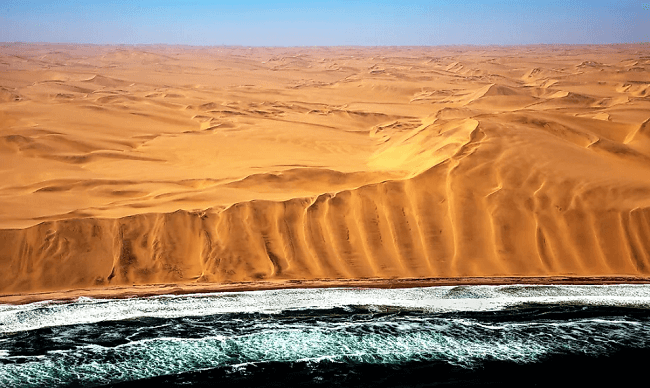
Plenty of rare animals can be found in this mesmerizing desert. There are darkling beetles and desert elephants. All these animals have found their way to live without water for several days. A huge Nummy National Park is a must-visit place when you visit the Namib desert. This park is among the largest in the world, and over here, you will find skeleton Deadvlei trees, red dunes, and the Serseim Cayon. 2. Atacama DesertAtacama Desert is the driest place on Earth, located west of the Andes; it runs through Peru and Chile. According to the research, some weather stations in Atacama have no record of having any rainfall. Despite all these weather conditions, the Atacama Desert is home to over 1,000,000 people. The biggest attraction of this desert is the geological structures and the plateaus that offer great value, beautiful nighttime skies with clear visibility, and the flora and fauna that can survive in the unforgiving climate. 3. Sahara DesertThe Sahara Desert is one of the largest hot deserts, and the 3rd largest desert in the world. The Sahara Desert is probably the most well-known desert across the globe. The main identity of the Sahara Desert is its golden dunes. The Sahara Desert stretches almost across North Africa while going through Algeria, Niger, Mali, Morocco, Libya, and Tunisia. Due to the size and topography of the Sahara Desert, the features of this mesmerizing desert vary by region, due to which you might experience diverse weather conditions across the different destinations. 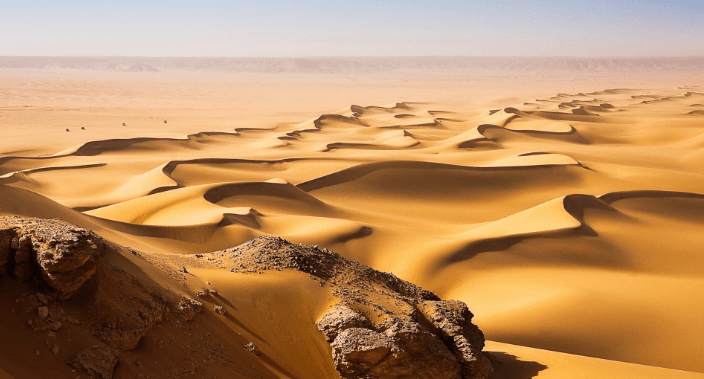
4. Arctic DesertThe Arctic Desert is the world's second-largest desert and is also the coldest desert across the globe. It encompasses regions in Russia, Greenland, and Alaska, Canada, the Arctic Desert has either perineal days or nights during most parts of the year. Due to global warming, the Arctic desert has lost a significant part of its character owing and the subsequent melting of snow. But despite such global warming, it is a wonderful place to enjoy nature and adventure. In this desert, you can find polar bears, moose, Arctic foxes, and snow owls. You can also go for adventurous things like fishing sky, sky karma kayaking, hiking, and the ATV adventure. 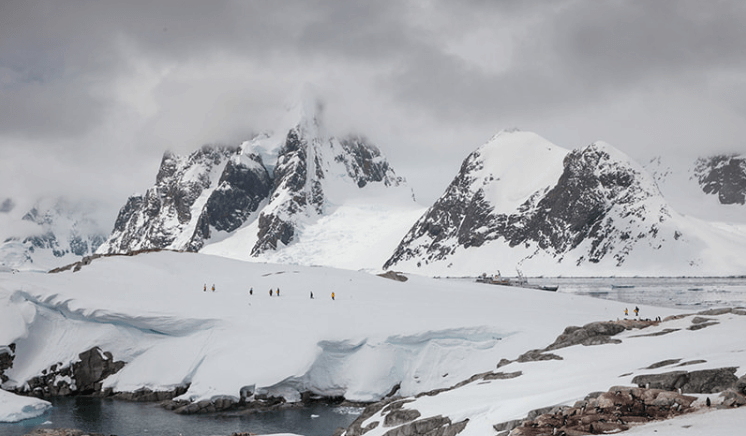
5. Great Victoria DesertThe Great Victoria Desert is the largest desert in Australia and is known for its delineation as an ecoregion by WF. With the harsh climate of an abundance of wildlife present, there is several dangerous species like the sandhill donar that can be found there. Not only this, but you will also experience monitor lizards, and then goes which predators are common to that area. Adventurous Things You Can Do in A DesertLet us say that desert is a harsh and unforgiving landscape, but it is also a place where you can enjoy the incredible beauty that too with fun and adventurous things. Desert has a vast expense of sand dunes, rugged canyons, and unique flora and fauna, due to which the desert offers a host of exciting activities for those who are willing to enjoy things and challenges in their fun, adventurous trip. Here is a list of some of the most adventurous things that you can do in a desert 1. SandboardingOne of the most thrilling and trendy activities that you can do in a desert is sandboarding. Sandboarding involves using a specially designed board to drive down the steep slopes of sand dunes. It is almost similar to snowboarding, but instead of snow, you will be running on the sand, and the sensation of blinding down a dune that too and a high speed gives a fun and adventurous memory to remember. 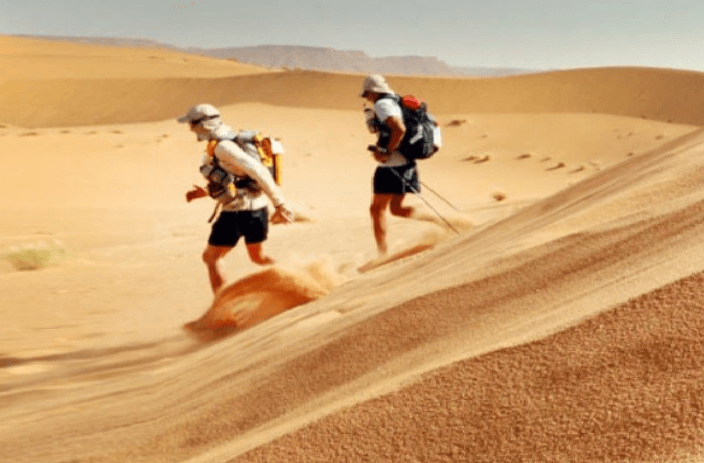
2. Dune BashingFor those who prefer a more high-octane adventure, dune bashing is a fun experience, a worthy experience to have with your loved ones. Dune bashing involves of driving a 4 X4 vehicle over the sand dunes at high speeds in which you will be facing certain hurdles, bouncing and sliding across the irregular landscape. It is a wild ride that will leave you breathless and, of course, a memory to remember forever. 3. Camel TrekkingSitting on the back of a camel is the most popular and fun way to explore the desert. Camels are well adapted to the life they face in deserts and provide a comfortable and unique way to travel across the desert. As you ride, you will get a sense of the vastness of the desert, and you may explore the unexplored things. 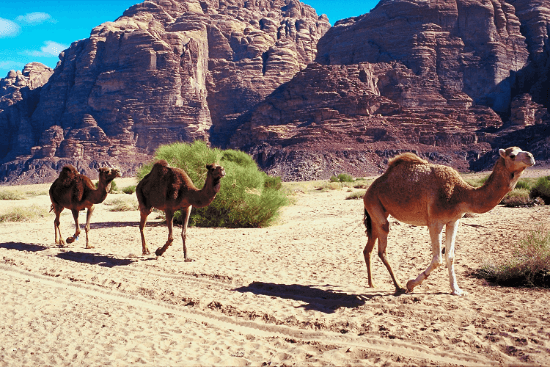
4. HikingThe desert is said to be home to the most stunning hiking trails present across the globe. And desserts, you may experience narrow canyons, vast sand dunes, and there are endless opportunities to explore the desert on foot. The view that you will see from the top of a desert mountain or from the bottom of a Canon, is just mesmerizing and worth the effort that you will take to hike the mountain and the effort that you will be taking to go to the bottom of a Canon, it is a must-see view 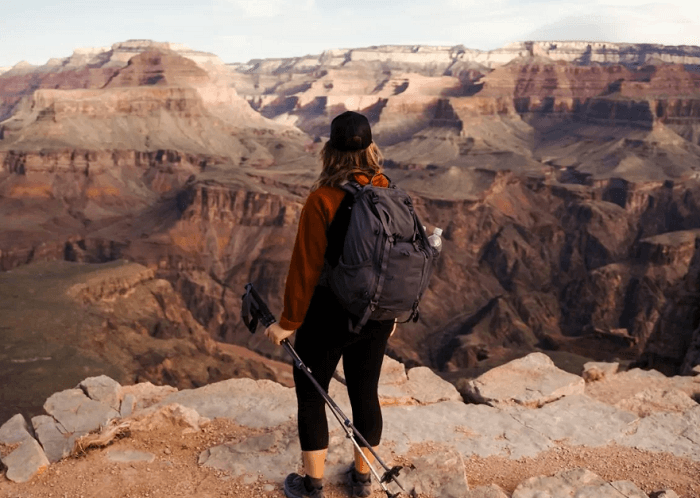
5. Star GazingStar gazing, the most exploring thing about the desert, is the night sky. With light and clear sky, the stars in the desert shine brighter and give you a memorable view. Setting in this the stars with your loved one and watching a movie while seeing a shooting star, or you may also experience a meteor shower, is just a glamorous experience. 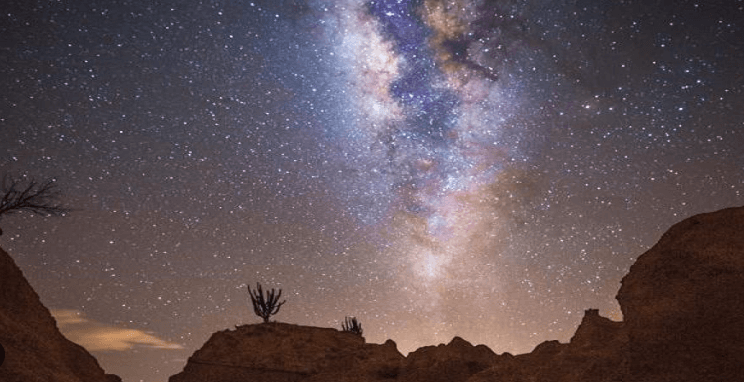
6. Hot Air BallooningTo enjoy your dessert trip at the utmost level, you should definitely go for hot air ballooning. To experience a unique perspective of the desert, take to the sky in a hot air balloon with your loved ones; as you go high above the dunes, you will see a bird's eye view of the vastness of the desert and the stunning colors that the nature showcases through the landscape. It is indeed a peaceful view and definitely an incredible way to experience the nature of a desert for 7. Rock ClimbingThe desert is the home to some of the most challenging and rewarding rock climbing routes present globally. There you will experience rugged terrain that provides a natural playground for climbers of all stages. Even if you are a beginner or an experienced climber, the desert offers a variety of roots that lead to challenging rock climbing adventures that suit your skills and enhance your trip to the desert. 8. Jeep ToursWe all have seen in the videos of celebrities traveling in deserts that too in a jeep tour. It is a fun tour adventure offered by all the deserts. These Jeep tools are meant for everybody; if you are not up for driving a 4 X4 vehicle by yourself, you can also go for a guided Jeep tour. In a guided Jeep tour, you will still get to experience the thrill of bouncing over the sand dunes and exploring the large desert; with the added knowledge given by the Jeep guide, you will even be able to experience a more fun and adventurous desert trip. 
ConclusionAlmost 1 billion people live in the deserts, and many of these people rely on centuries-old customs to make their lives comfortable and easy. A Desert is generally considered a barren and empty landscape. It is because of the writers, filmmakers, artists, and critics who show the pictures of deserts in such a manner. The truth is that deserts are beautiful, with plenty of living organisms staying there. 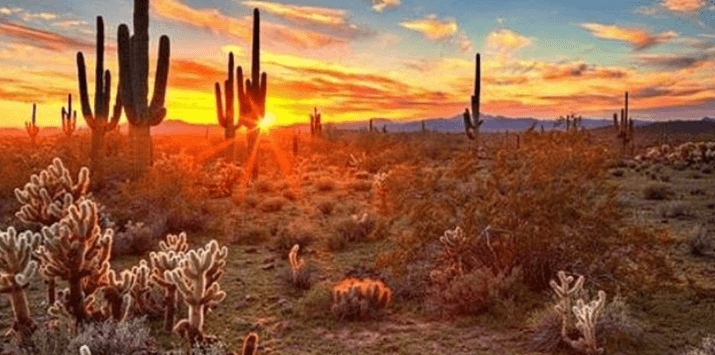
The deserts generally have images of a vast expanse, a timeless space of sand beauty. All adventure lovers once in their lifetime love to visit the deserts to enjoy their beauty with the power or, we can say, the forces of nature. Deserts are the most fun and beautiful places to visit. In the core of deserts lie some beautiful and rare plants; you will experience so much sand and camels, and if you are lucky enough, you might interact with the people staying there and get to know what the survival tactics are they have been following for centuries. Not only this, but you may get to know the artistic things that are followed by the people staying in the deserts and which is also their main source of income. The people staying near the beautiful deserts of India run their households by doing beautiful and unique artistic work like making Rajasthani jewels, architecture sculptures and paintings, blue pottery, textiles, jewels, and many more. Also, the people of Rajasthan have a superb hold on the agricultural industry. Major crops that help people have a complete meal are grown in Rajasthan- jowar, bajra, maize, ragi, rice, wheat, barley, gram, tur, pulses, ground nut, and many more.
Next TopicDiscipline Definition
|
 For Videos Join Our Youtube Channel: Join Now
For Videos Join Our Youtube Channel: Join Now
Feedback
- Send your Feedback to [email protected]
Help Others, Please Share










